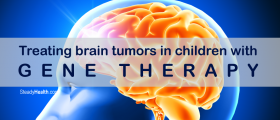
Definition
Neurofibromatosis is a genetic disorder that causes changes onto the nervous system. Both brain and spinal cord as well as the peripheral nerves may be affected. The disease features with the formation of benign tumors which can be made of all components of the nerves. The components of so called neural crest Schwann cells, endoneurinal fibroblasts as well as melanocytes are engaged in the process of rapid growth of the tumors. The tumors called neurofibromas that are specific for this disorder can be present in any part of the body. Apart from tumors there are skin changes and numerous neurological problems.
Neurofibromatosis includes two diseases that are rather different. Still they resemble each other. There is type 1 and 2 neurofibromatosis. Type 1 neurofibromatosis is also known as von Recklinghausen's disease and type two is also called bilateral neurofibromatosis.
Symptoms of Neurofibromatosis
Both types include the formation of tumors and the symptoms are basically the consequence of the formed tumors. This is why the symptoms mainly vary according to the size and location of the very tumor. But unlike the type 1 which is basically the illness that affects skin in type 2 the symptoms are more intensive as tumors tend to affect deeper structures of the body.
Complications of Type 1 Neurofibromatosis
If the tumor forms near the nerves of from the nerves that are in charge with sight and hearing, visual and acoustic problems occur. One may go blind and deaf. The tumors of cranial nerves may press different brain structures. Patient may complaint about difficulties with concentration and on memory loss. Intracranial tumors lead to seizures. The tumors that grow underneath the skin may become quite large and resemble knots. Multiple tumors next to each other give the appearance of cords made of knots. The skin may change color especially in the area of armpits. The major problem is compression onto the surrounding structures.
Around third of all patients suffer from high blood pressure, develop irregular curving of the spine and face problems with bones that may result in short stature, extremely large skull and so on. Extremely rarely patients who are suffering from type 1 neurofibromatosis will end with malignant tumor.
Complications of Type 2 Neurofibromatosis
The tumors in type 2 neurofibromatosis affect brain, spinal cord and skin and are more severe than those in type 1 of the disease. The skin tumors are followed and they become suspicious in case that they start growing rapidly of if a pain in that area occurs.
Tumors in the skull are not malignant. Still if large they lead to increase of intracranial pressure and consequent symptoms and signs. The pressure onto the optic nerve leads to problems with vision while the affection of the acoustic nerve reflects in hearing problems. Facial weakness or one side paralysis is one more possible complication of type 2 neurofibromatosis.

















Your thoughts on this
Loading...